Using Smartphones to Locate Trapped Victims in Disasters
Abstract
1. Introduction
2. Related Works
3. Localization Method
3.1. Signal Source of Cell Phone
3.2. Detect System on Notebook Computers
4. Results
5. Conclusions
Author Contributions
Funding
Institutional Review Board Statement
Informed Consent Statement
Data Availability Statement
Conflicts of Interest
References
- Bilham, R. The seismic future of cities. Bull. Earthq. Eng. 2009, 7, 839. [Google Scholar] [CrossRef]
- Baniukevic, A.; Jensen, C.S.; Lu, H. Hybrid Indoor Positioning with Wi-Fi and Bluetooth: Architecture and Performance. In Proceedings of the IEEE 14th International Conference on Mobile Data Management, Milan, Italy, 3–6 June 2013. [Google Scholar] [CrossRef]
- Ta, V.-C.; Dao, T.-K.; Vaufreydaz, D.; Castelli, E. Smartphone-Based User Positioning in a Multiple-User Context with Wi-Fi and Bluetooth. In Proceedings of the International Conference on Indoor Positioning and Indoor Navigation (IPIN), Nantes, France, 24–27 September 2018. [Google Scholar] [CrossRef]
- Chiu, W.-T.; Arnold, J.; Shih, Y.-T.; Hsiung, K.-H.; Chi, H.-Y.; Chiu, C.-H.; Tsai, W.-C.; Huang, W. A Survey of International Urban Search-and-rescue Teams following the Ji Ji Earthquake. Disasters 2002, 26, 85–94. [Google Scholar] [CrossRef] [PubMed]
- Yeh, C.-H.; Loh, C.-H.; Tsai, K.-C. Overview of Taiwan Earthquake Loss Estimation System. Nat. Hazards 2006, 37, 23–37. [Google Scholar] [CrossRef]
- Peleg, K.; Reuveni, H.; Stein, M. Earthquake disasters—Lessons to be learned. Isr. Med. Assoc. J. IMAJ 2002, 4, 361–365. [Google Scholar] [PubMed]
- Rosen, L.; Carrier, M.; Miller, A.; Rokkum, J.; Ruiz, A. Sleeping with technology: Cognitive, affective, and technology usage predictors of sleep problems among college students. Sleep Health 2016, 2, 49–56. [Google Scholar] [CrossRef] [PubMed]
- Zeagler, C.; Byrne, C.; Valentin, G.; Freil, L.; Kidder, E.; Crouch, J.; Starner, T.; Moore Jackson, M. Search and Rescue: Dog and Handler Collaboration through Wearable and Mobile Interfaces. In Proceedings of the Third International Conference on Animal-Computer Interaction, Milton Keynes, UK, 15–17 November 2016. [Google Scholar]
- Albanese, A.; Sciancalepore, V.; Costa-Pérez, X. SARDO: An automated search-and-rescue drone-based solution for victims localization. arXiv 2020, arXiv:2003.05819. [Google Scholar] [CrossRef]
- Półka, M.; Ptak, S.; Kuziora, Ł. The use of UAV’s for search and rescue operations. Procedia Eng. 2017, 192, 748–752. [Google Scholar] [CrossRef]
- Wang, A.; Ji, X.; Wu, D.; Bai, X.; Ding, N.; Pang, J.; Chen, S.; Chen, X.; Fang, D. GuideLoc: UAV-assisted multitarget localization system for disaster rescue. Mob. Inf. Syst. 2017, 2017, 1267608. [Google Scholar] [CrossRef]
- Ho, Y.-H.; Chen, Y.-R.; Chen, L.-J. Krypto: Assisting search and rescue operations using Wi-Fi signal with UAV. In Proceedings of the First Workshop on Micro Aerial Vehicle Networks, Systems, and Applications for Civilian Use, Florence, Italy, 18 May 2015. [Google Scholar]
- Yavuz, D.; Akbıyık, H.; Bostancı, E. Intelligent Drone Navigation for Search and Rescue Operations. In Proceedings of the 24th Signal Processing and Communication Application Conference (SIU), Zonguldak, Turkey, 16–19 May 2016; IEEE: New York, NY, USA, 2016. [Google Scholar]
- Fasano, L.; Sergi, I.; Almeida, A.; Jayo, A.B.; Rametta, P.; Patrono, L. Performance Evaluation of Indoor Positioning Systems based on Smartphone and Wearable Device. In Proceedings of the 2020 5th International Conference on Smart and Sustainable Technologies (SpliTech), Split, Croatia, 23–26 September 2020; IEEE: New York, NY, USA, 2020. [Google Scholar]
- Avgoustinos, F.; Oliff, W.; Loukas, G. Bluetooth Low Energy Based Occupancy Detection for Emergency Management. In Proceedings of the 2016 15th International Conference on Ubiquitous Computing and Communications and 2016 International Symposium on Cyberspace and Security (IUCC-CSS), Granada, Spain, 14–16 December 2016; IEEE: New York, NY, USA, 2016. [Google Scholar]
- Tekler, Z.D.; Low, R.; Yuen, C.; Blessing, L. Plug-Mate: An IoT-based occupancy-driven plug load management system in smart buildings. Build. Environ. 2022, 223, 109472. [Google Scholar] [CrossRef]
- Balaji, B.; Xu, J.; Nwokafor, A.; Gupta, R.; Agarwal, Y. Sentinel: Occupancy Based HVAC Actuation using Existing WiFi Infrastructure within Commercial Buildings. In Proceedings of the 11th ACM Conference on Embedded Networked Sensor Systems, Rome, Italy, 11–15 November 2013. [Google Scholar]
- Filippoupolitis, A.; Oliff, W.; Loukas, G. Occupancy Detection for Building Emergency Management Using BLE Beacons. In International Symposium on Computer and Information Sciences; Springer: Cham, Switzerland, 2016; pp. 233–240. [Google Scholar]
- Hahnel, D.; Burgard, W.; Fox, D.; Fishkin, K.; Philipose, M. Mapping and Localization with RFID Technology. In Proceedings of the IEEE International Conference on Robotics and Automation, ICRA’04, New Orleans, LA, USA, 26 April–1 May 2004; IEEE: New York, NY, USA, 2004; Volume 1. [Google Scholar]
- Li, N.; Becerik-Gerber, B. Performance-based evaluation of RFID-based indoor location sensing solutions for the built environment. Adv. Eng. Inform. 2011, 25, 535–546. [Google Scholar] [CrossRef]
- Nagatani, K.; Ishida, H.; Yamanaka, S.; Tanaka, Y. Three-Dimensional Localization and Mapping for Mobile Robot in Disaster Environments. In Proceedings of the 2003 IEEE/RSJ International Conference on Intelligent Robots and Systems (IROS 2003), Las Vegas, NV, USA, 27–31 October 2003; IEEE: New York, NY, USA, 2003; Volume 4. [Google Scholar]
- Deleforge, A.; Di Carlo, D.; Strauss, M.; Serizel, R.; Marcenaro, L. Audio-based search and rescue with a drone: Highlights from the IEEE signal processing cup 2019 student competition [SP competitions]. IEEE Signal Process. Mag. 2019, 36, 138–144. [Google Scholar] [CrossRef]
- Tekler, Z.D.; Low, R.; Gunay, B.; Andersen, R.K.; Blessing, L. A scalable Bluetooth Low Energy approach to identify occupancy patterns and profiles in office spaces. Build. Environ. 2020, 171, 106681. [Google Scholar] [CrossRef]
- Leader. Life Detector Camera Leader Cam. Available online: https://www.leader-group.company/en/usar-victim-search-equipment/usar-life-detectors-search-cameras/victim-search-camera/life-detector-camera-leader-cam (accessed on 8 March 2022).
- Leader. Life Detector Device with Seismic Sensors Leader Search. Available online: https://www.leader-group.company/en/usar-victim-search-equipment/usar-life-detectors-search-cameras/life-victim-detector/life-detector-device-seismic-sensors-leader-search (accessed on 10 March 2022).
- Hashmi, A. A Novel Drone-based Search and Rescue System using Bluetooth Low Energy Technology. Eng. Technol. Appl. Sci. Res. 2021, 11, 7018–7022. [Google Scholar] [CrossRef]
- Mussina, A.; Aubakirov, S. RSSI Based Bluetooth Low Energy Indoor Positioning. In Proceedings of the 12th International Conference on Application of Information and Communication Technologies (AICT), Almaty, Kazakhstan, 17–19 October 2018; IEEE: New York, NY, USA, 2018; pp. 1–4. [Google Scholar] [CrossRef]
- Huh, J.-H.; Seo, K. An indoor location-based control system using Bluetooth beacons for IoT systems. Sensors 2017, 17, 2917. [Google Scholar] [CrossRef] [PubMed]
- Universal Beacon Library. Available online: https://www.nuget.org/packages/UniversalBeaconLibrary (accessed on 18 January 2022).
- Thaljaoui, A.; Val, T.; Nasri, N.; Brulin, D. BLE localization using RSSI measurements and iRingLA. In Proceedings of the 2015 IEEE International Conference on Industrial Technology (ICIT), Seville, Spain, 17–19 March 2015; IEEE: New York, NY, USA, 2015. [Google Scholar]
- Shchekotov, M. Indoor Localization Method Based on Wi-Fi Trilateration Technique. In Proceedings of the 16th Conference of Fruct Association, Oulu, Finland, 27–31 October 2014. [Google Scholar]
- Public Warning System. Available online: http://www.emfsite.org.tw/PWS/p1-2.html (accessed on 8 February 2022).
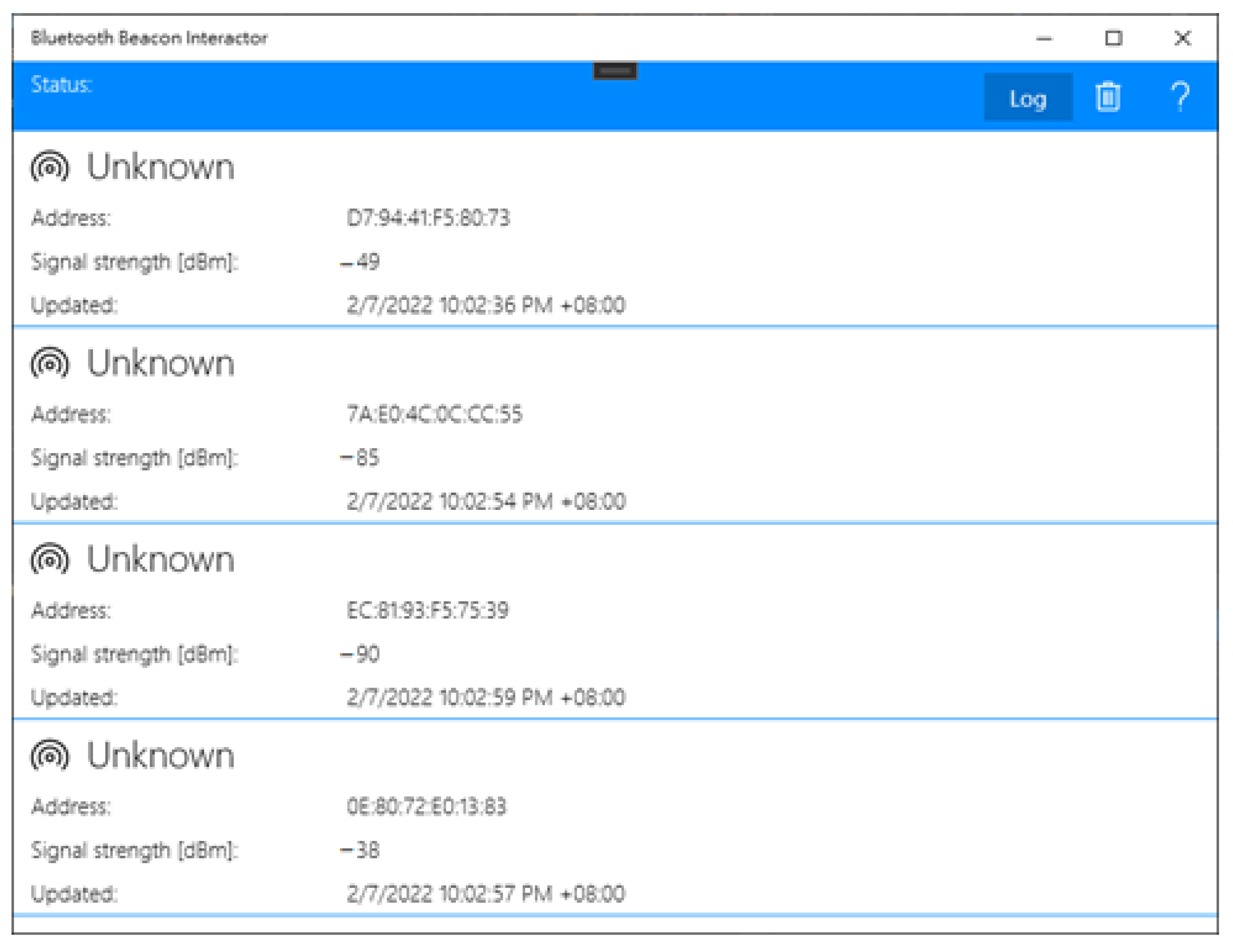
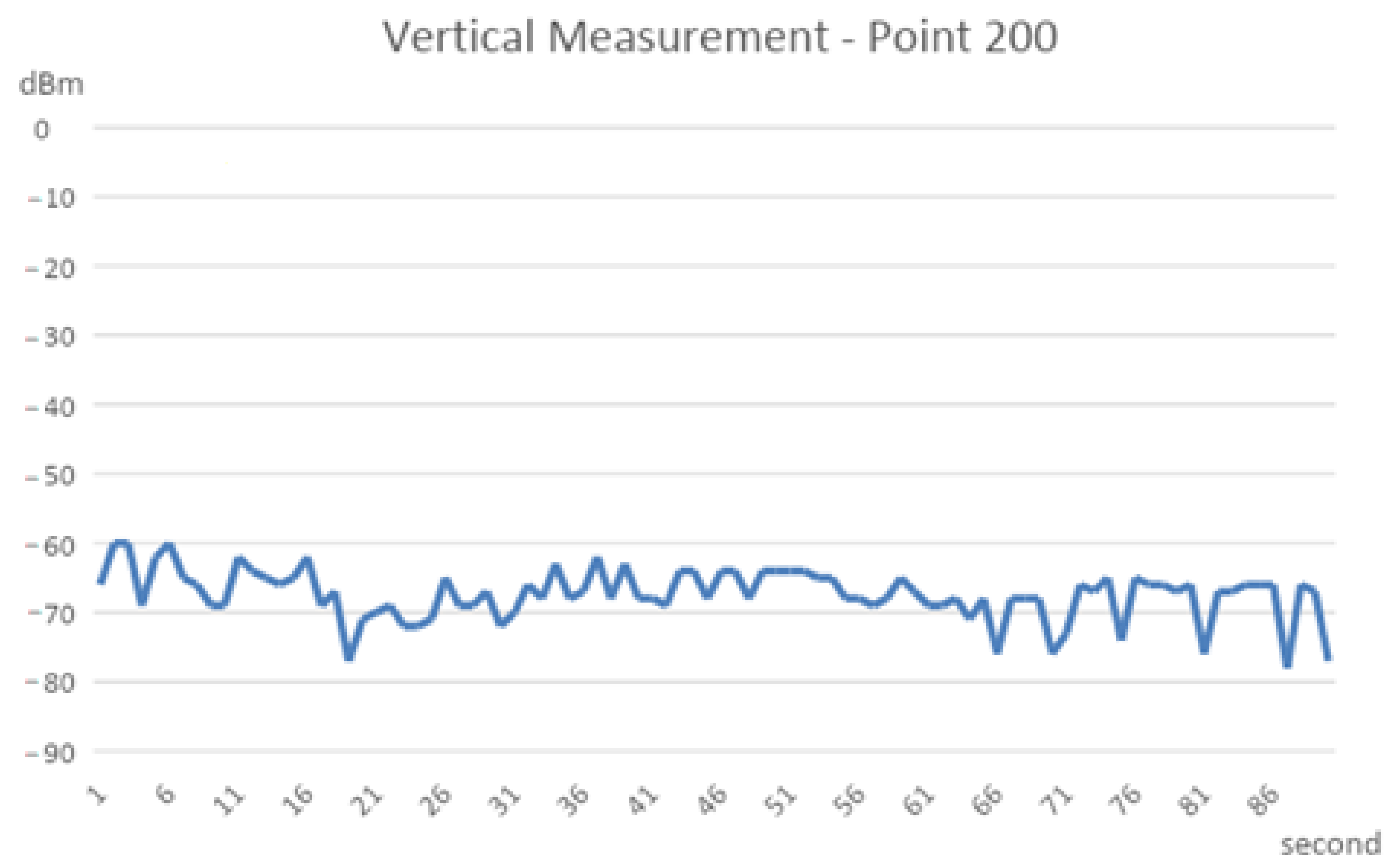
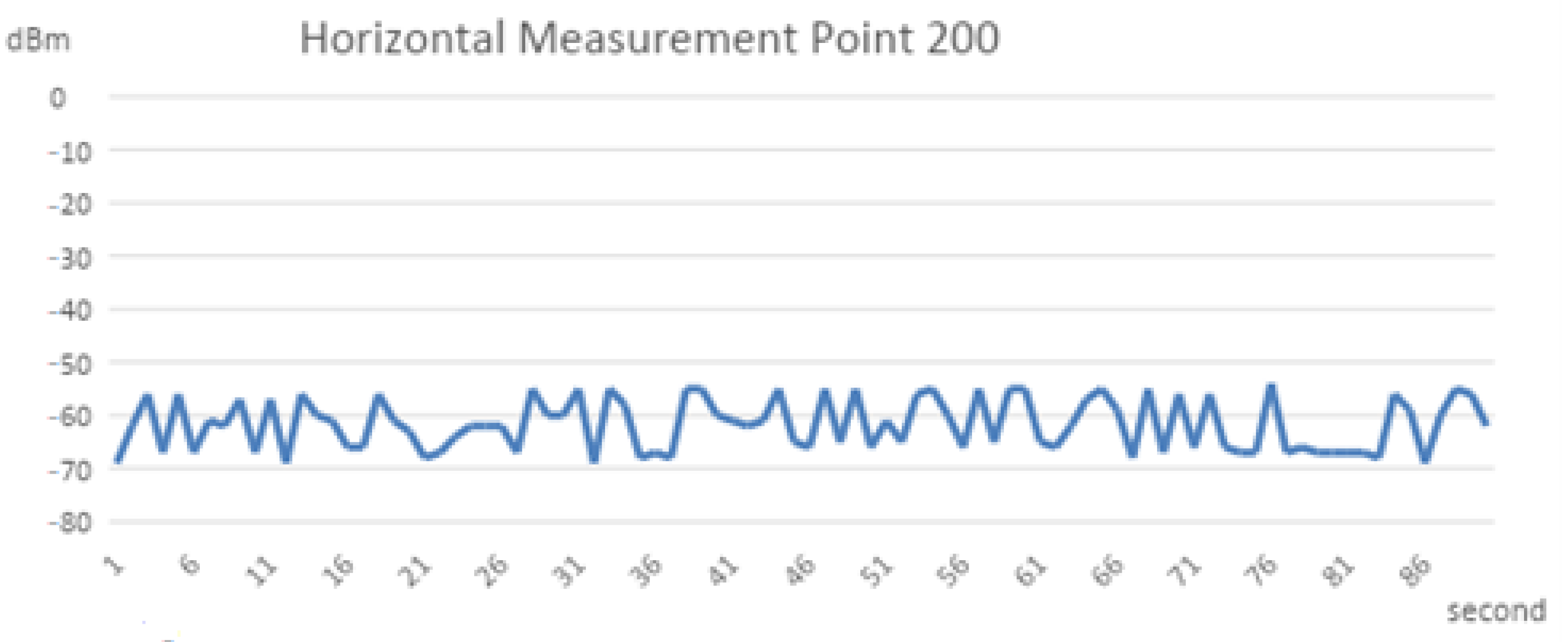
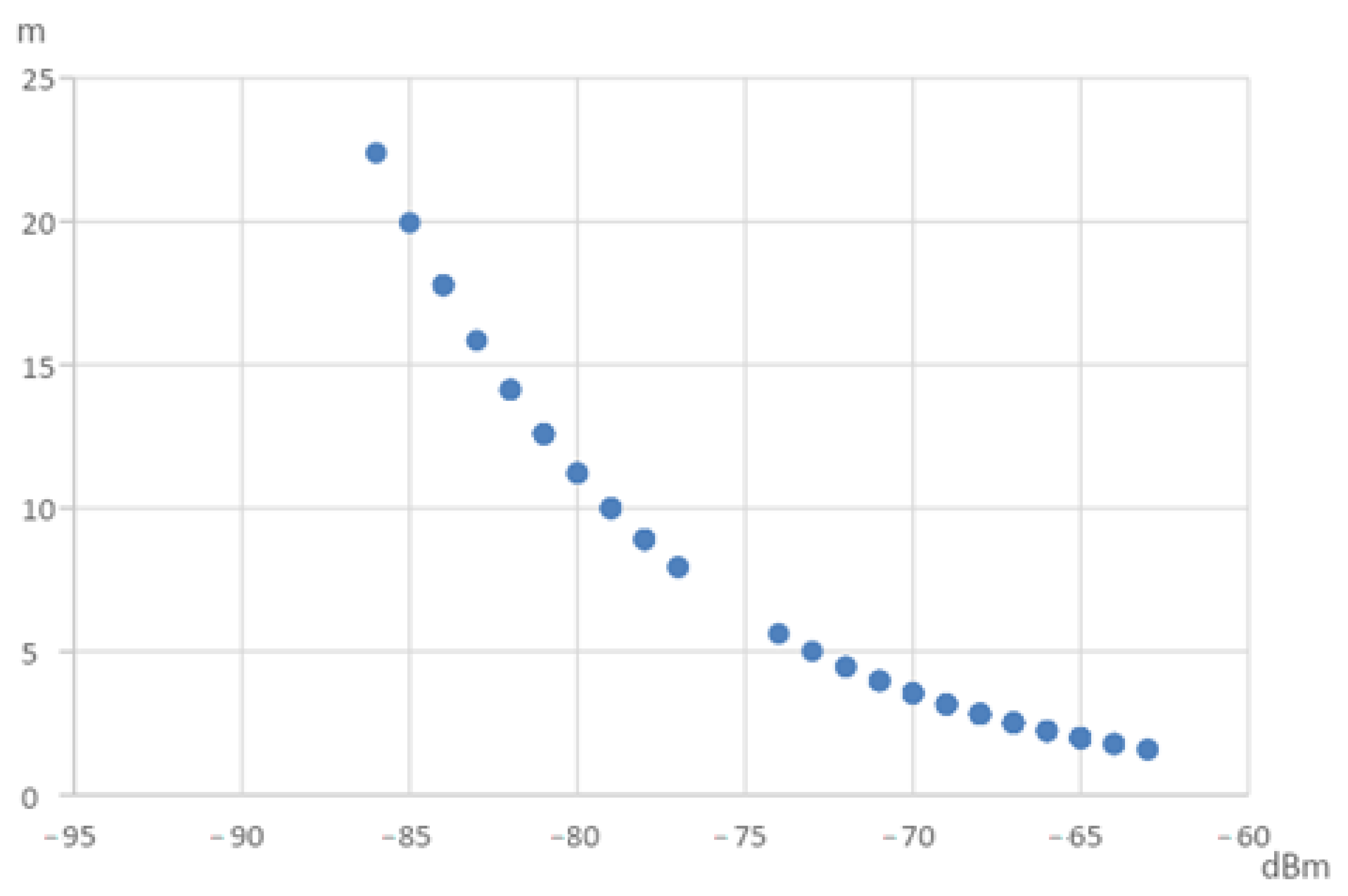
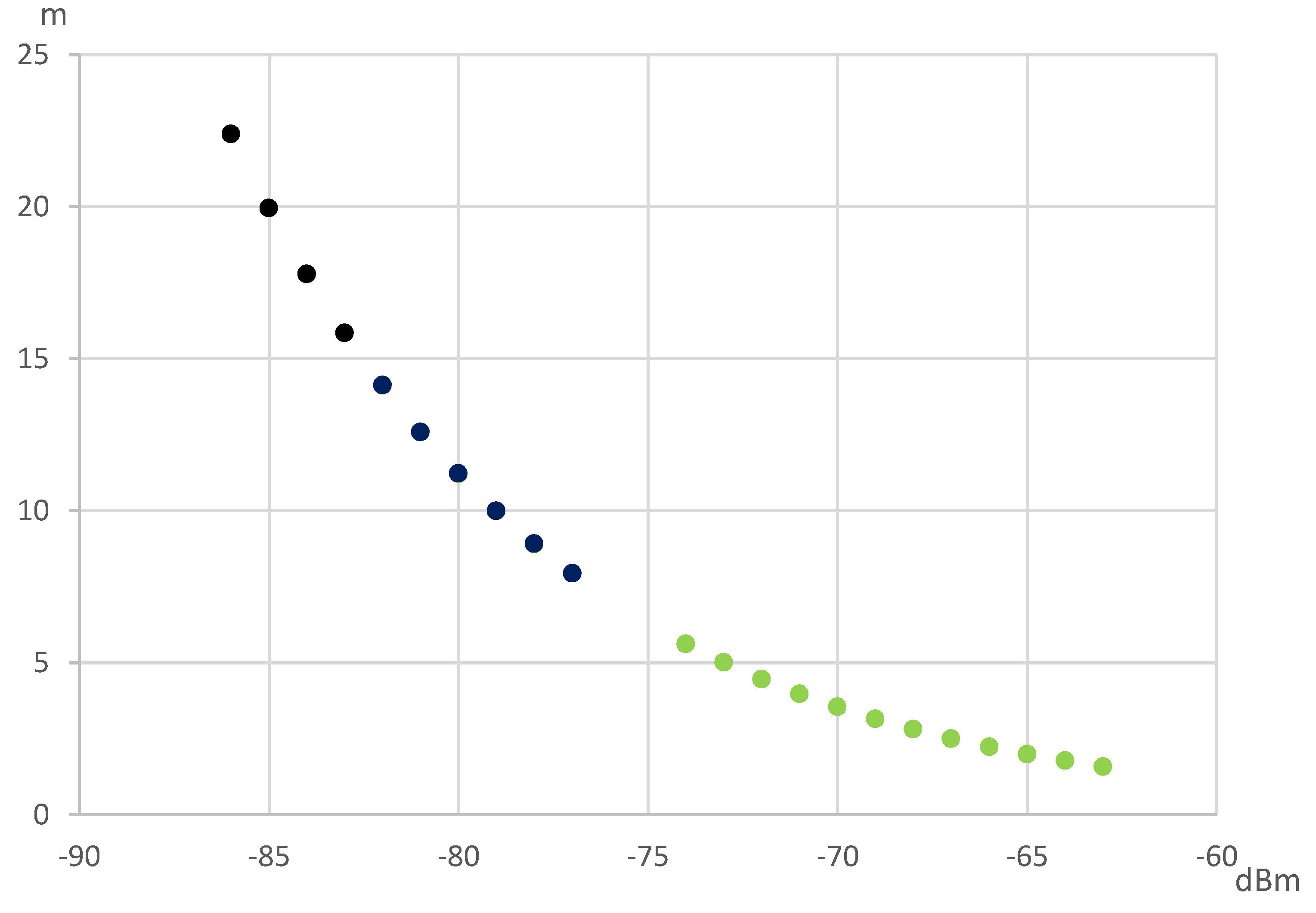

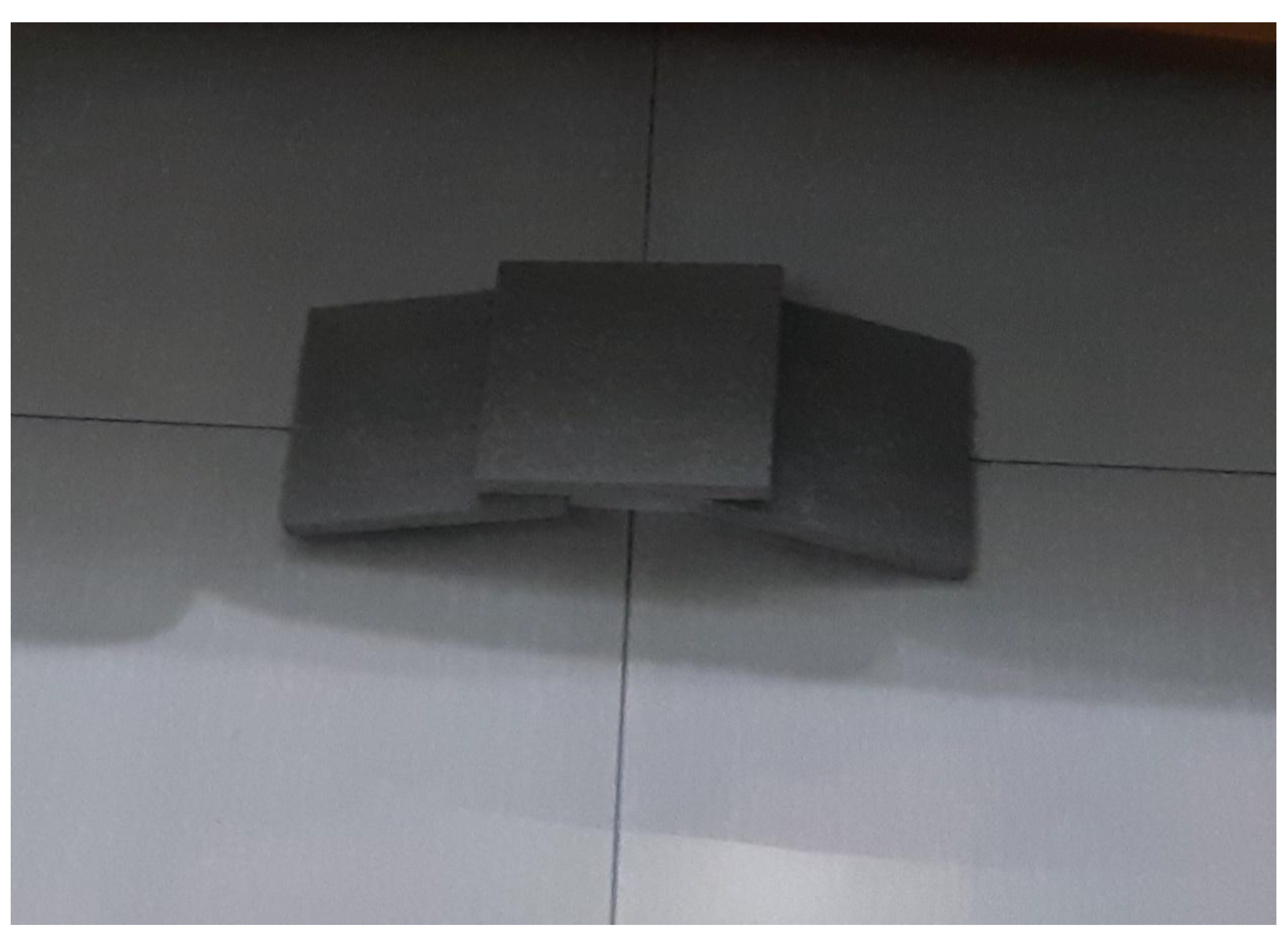
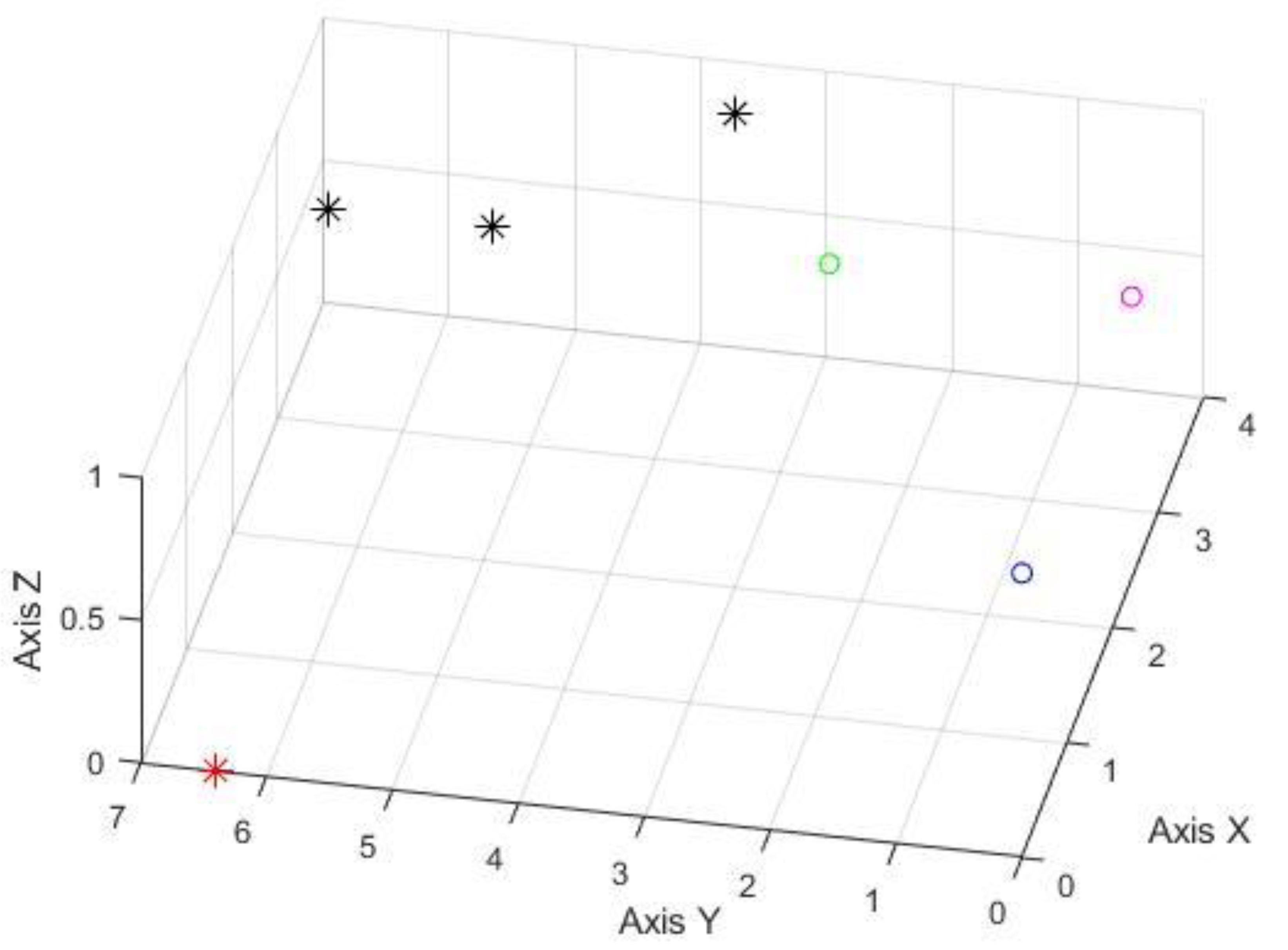
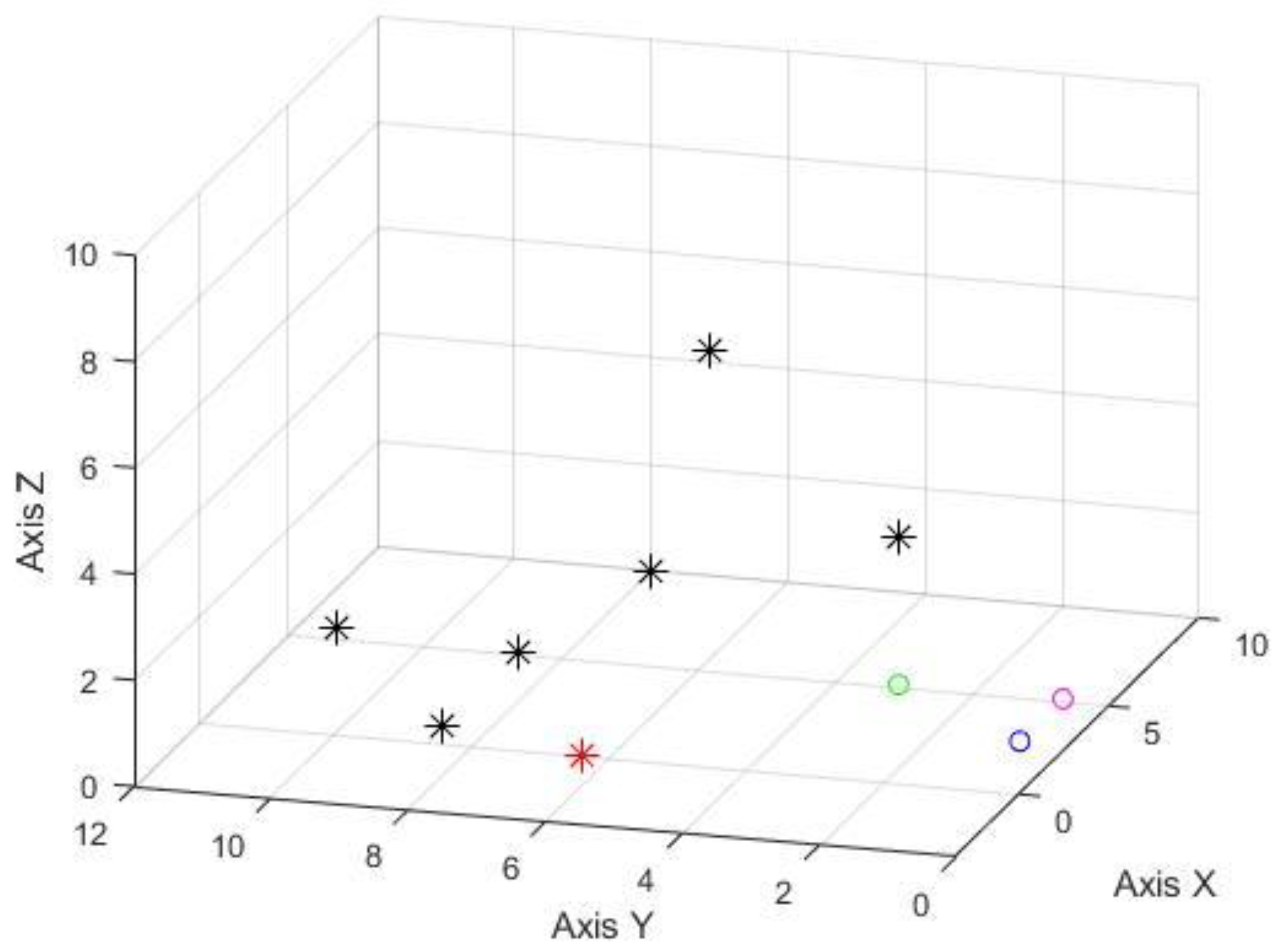
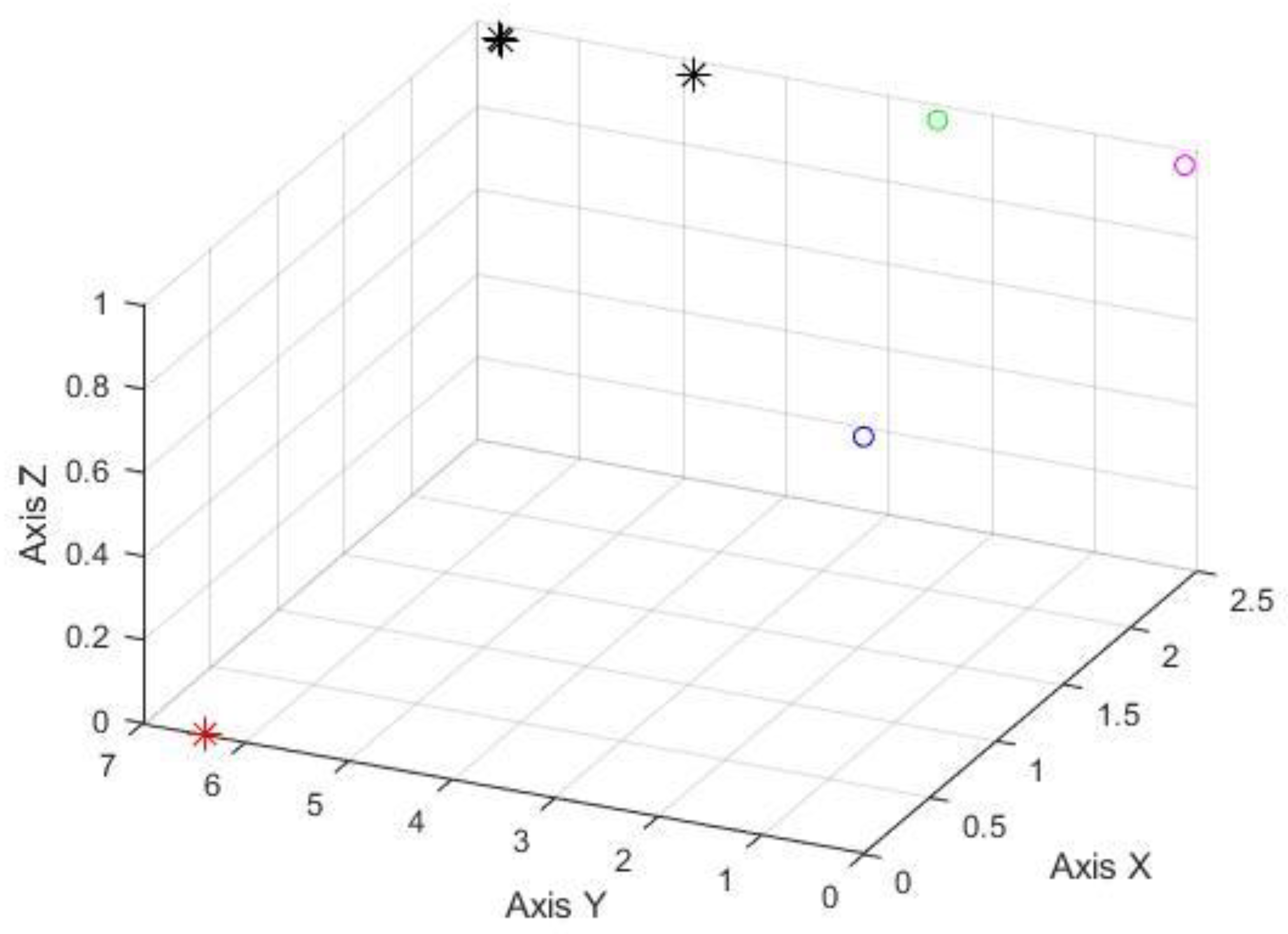
| STD Value | Max Value | Min Value | Data Range | |
|---|---|---|---|---|
| Vertical Interval of 200 cm | 3.7377 | −60 | −78 | 18 |
| Vertical Interval of 0 cm | 3.4842 | −61 | −83 | 22 |
| Horizontal Interval of 0 cm | 2.4491 | −55 | −65 | 10 |
| Horizontal Interval of 100 cm | 3.7732 | −51 | −69 | 18 |
| Horizontal Interval of 200 cm | 4.9416 | −54 | −69 | 15 |
| N | Wave Value |
|---|---|
| 1 | >−69 |
| 2 | <−70 and >−79 |
| 3 | <−80 |
Publisher’s Note: MDPI stays neutral with regard to jurisdictional claims in published maps and institutional affiliations. |
© 2022 by the authors. Licensee MDPI, Basel, Switzerland. This article is an open access article distributed under the terms and conditions of the Creative Commons Attribution (CC BY) license (https://creativecommons.org/licenses/by/4.0/).
Share and Cite
Tai, Y.; Yu, T.-T. Using Smartphones to Locate Trapped Victims in Disasters. Sensors 2022, 22, 7502. https://doi.org/10.3390/s22197502
Tai Y, Yu T-T. Using Smartphones to Locate Trapped Victims in Disasters. Sensors. 2022; 22(19):7502. https://doi.org/10.3390/s22197502
Chicago/Turabian StyleTai, Yenpo, and Teng-To Yu. 2022. "Using Smartphones to Locate Trapped Victims in Disasters" Sensors 22, no. 19: 7502. https://doi.org/10.3390/s22197502
APA StyleTai, Y., & Yu, T.-T. (2022). Using Smartphones to Locate Trapped Victims in Disasters. Sensors, 22(19), 7502. https://doi.org/10.3390/s22197502






